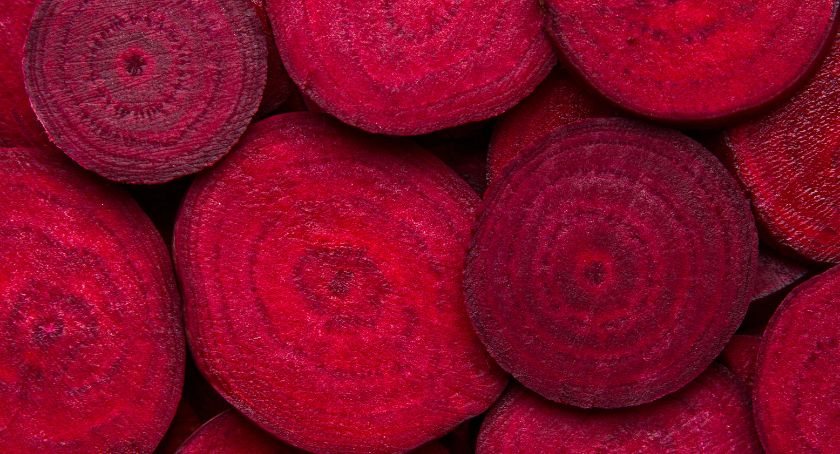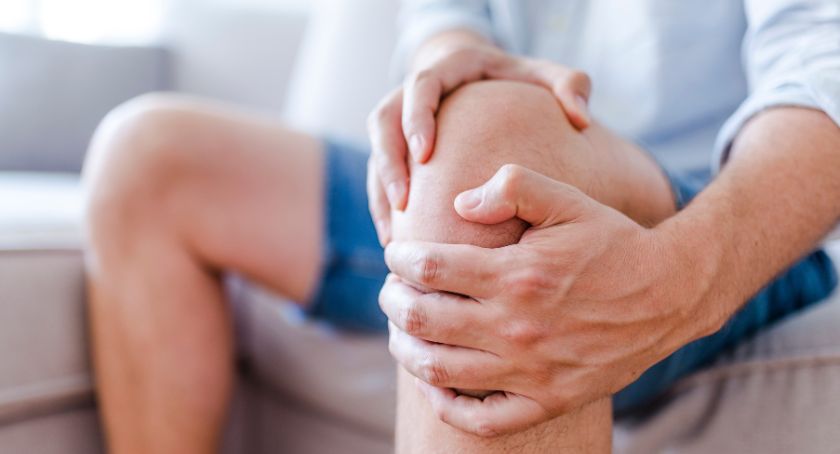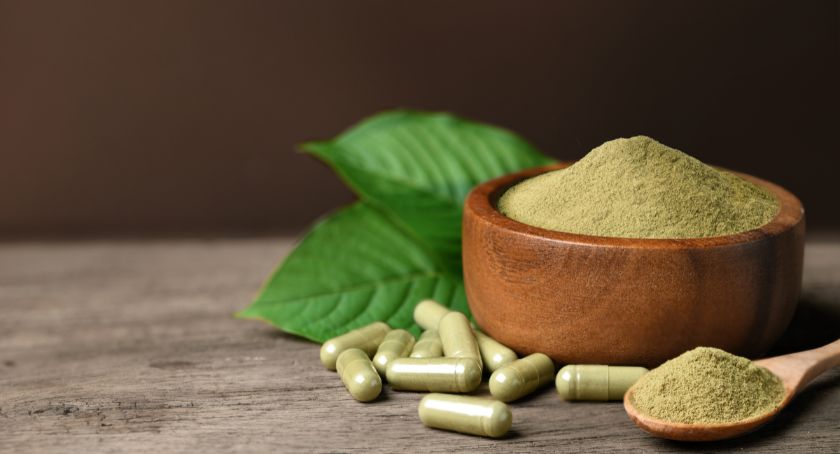Columns
Cannabinoids and Application Potential for Beauty and Personal Care
Emerging research and industry trends point to a bright future for a full range of cannabis derived ingredients, and a host of health benefits.

By: Sheldon Baker
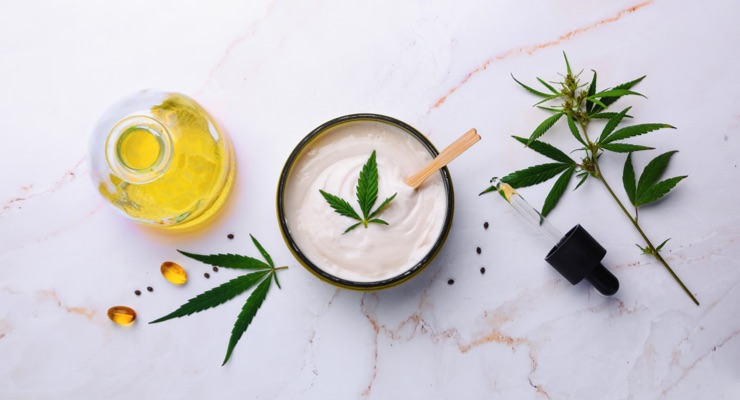
Nicole Brown serves as chief innovation officer for North Carolina-based Open Book Extracts (OBX), an ingredient and product development manufacturer and supplier focused on cannabinoid-enabled health and wellness.
Brown channels data-driven consumer insights into a long-term course of action, delivering immediately usable product innovation. She also drives awareness and thought leadership by overseeing strategic marketing efforts, including PR, event marketing, advertising, and partnerships.
She has held management roles at LVMH and Shiseido Cosmetics, focusing on product development and commercialization in the beverage and beauty sectors. Brown graduated from Harvard University with an honors degree in French Literature and a minor in Organic Chemistry.
Area Code 420 (AC 420): What CBD product innovations are you seeing in the cosmetics and beauty industry? What trends are taking shape?
Brown: CBD has become one of the most famous components of the cannabis plant. In the past few years, the cannabinoid has risen to popularity, especially in the beauty and wellness industry. The therapeutic benefits of the cannabinoid to treat skin problems and enhance glow and texture has given birth to many CBD-infused product ranges that can have many benefits for the skin.
With more brands inclined to create revolutionary skin care products with this incredible ingredient, there are several key trends shaping up today that will influence the industry’s future.
Ingestible CBD products like Sunday Scaries CBD focus on problems like pain and stress relief. Some brands have begun experimenting with CBD in their cosmetic product lines as well.
According to Shauna Blanch, the co-founder of Color Up Therapeutics, CBD-infused makeup will be the next big thing to look forward to. Many infused all-day coverage makeup products will find their way into stores, from foundation and blush to eye pencils, mascara, and
brow gels.
Also, the spectrum of 21 amino acids and vitamins present in hemp will encourage infused hair care and skin care product lines focused on eliminating common problems such as dryness, itchiness,
and acne.
While the two primary cannabinoids, CBD and THC, have proven to exhibit incredible benefits, the focus is shifting toward the minor cannabinoids of cannabis. Although extensive research is required to understand the true potency of these cannabinoids, some of them, such as CBG, show potential for promising applications in the beauty industry.
More professional CBD brands are expanding their focus by widening the cannabinoid profile in their products. The aim is to support the entourage effect that can elevate the benefits of CBD. The industry is evolving to accommodate full-spectrum products that enable cannabinoids to work together instead of just CBD.
Proof Of Quality: The rapid expansion in the CBD market led to severe fluctuations in the average quality of infused products available today. To distinguish from subpar competitors, CBD companies are taking this quality testing to a whole new level. Like in the case of advanced skin care treatments or products that provide third party testing to demonstrate safety, CBD products with third-party certifications will become more common.
So far, customer testimonials and the few studies conducted are the only means of understanding the quality of products. These clinical studies and reports will provide more information about the potency, quality, and safety of the product and increase trust among users.
Broadening Demographics: So far, Millennials have been the most popular demographic for CBD beauty and wellness products. But the cannabinoid has several promising benefits to appeal to broader demographic targets such as Gen X and older Millennials. CBD purveyors are finding opportunities to reach out to new consumer groups who have previously felt intimidated or confused about the compound. Apart from the attractive choices for young generations, benefits such as pain relief can appeal to senior citizens interested in experimenting with natural products.
No Greenwashing: With more beauty brands trying to catch up with the CBD trend, the problem of over-hyping or misleading marketing has started to grow simultaneously. Also known as greenwashing, the sector is facing a huge challenge caused by products marketed as CBD, while they only contain hemp seed oil. While hemp seed has its plethora of benefits, it is certainly not the same as CBD. Currently, many companies are charging premium prices for CBD products by marketing them with overhyped claims that can jeopardize the entire sector’s credibility. Regulatory changes would benefit users from falling prey to such false marketing strategies.
Startups Disrupting The Market: Beauty conglomerates are taking cautious steps not to trip over cannabis market fluctuations influenced by changing government regulations or stigma around the plant. But more startups are enthusiastically taking the plunge into the market to disrupt the segment with incredible product lines. While large corporations are trying to reduce direct involvement in the segment to avoid huge risks, small players are captivating their customers with products that exhibit the true potential for CBD. Women-led startups in the beauty and wellness sector are witnessing huge investments, rapid growth, and expansion. This trend will expand further in the years to come.
AC 420: Why do you think CBD has become so popular in personal care products?
Brown: In a 2019 review, scientists studied the role of the endocannabinoid system (ECS) in our integumentary system (skin). Previous studies had demonstrated the importance of the ECS in immune function and the nervous system, but the role of the ECS in the skin was less understood. By the time the review was finished that had all changed.
The authors concluded that the ECS was “deeply involved in the maintenance of skin homeostasis, barrier formation, and regeneration, and its dysregulation was implicated to contribute to several highly prevalent diseases and disorders, e.g., atopic dermatitis, psoriasis, scleroderma, acne, hair growth and pigmentation disorders, keratin diseases, various tumors, and itch.”
In short, different cannabinoids can tell cells what to do and when to do it. Normally, cannabinoids produced by the body (endocannabinoids) manage all of this on their own, and skin remains healthy. However, when your integumentary system is out of balance, you end up with acne, dry skin, or some other disorders.
For years, we have been treating symptoms instead of causes. But now that we know how the ECS can cause skin conditions, we can actually address the root of these issues. Phytocannabinoids, or cannabinoids that come from plants, can bind with endogenous cannabinoid receptor sites much like endocannabinoids do. This means phytocannabinoids can be used to stimulate underactive sites or downregulate overactive ones.
By stimulating or inhibiting various receptor sites, cannabinoids may be able to produce targeted hair growth or loss, alleviate sunburn, darken or lighten skin pigmentation, fight tumors, alleviate dry skin, and stop acne or itches. If this is all true, the cannabinoid-based beauty market may be even bigger than expected.
AC 420: Is it true that CBD serves as an anti-inflammatory with antioxidant and anti-aging properties?
Brown: In a 2016 study, scientists examined how a range of minor cannabinoids influenced sebocyte function. As a refresher, sebocytes are gland cells that produce natural oils to protect skin. When too much of this oil is produced acne breakouts can occur. At the same time, if too little oil is manufactured, the result may be dry skin.
Amazingly, many different cannabinoids seemed to either increase or suppress the function of these cells. In particular CBG and CBGV increased sebaceous liquid synthesis, leading researchers to conclude that they might be able to treat “dry-skin syndrome.” On the other hand, CBC, CBDV, and especially THCV, are promising anti-acne agents.
Here is an overview of the therapeutic potential of each rare cannabinoid.
Cannabigerol (CBG) for Skin Health: Studies have found CBG offers “potential therapeutic value in the treatment of psoriasis” as an anti-inflammatory. Psoriasis causes cellular buildup on the surface of the skin, and experts surmise that inflammation is a root cause. There is also evidence CBG acts as an effective antibacterial agent, which could be useful in the treatment of acne and other bacterial
skin conditions.
Cannabichromene (CBC) for Skin Health: This exciting cannabinoid has shown anti-inflammatory and analgesic activity in animal studies. One 2016 study noted that CBC displayed “remarkable anti-inflammatory actions” related to acne. A cannabinoid that can calm inflammation while also relieving pain could have immense use since many skin problems tied to inflammation—such as dermatitis, psoriasis, and eczema—cause severe discomfort.
Cannabidivarin (CBDV) for Skin Health: Recent studies indicate CBDV may help dry skin syndrome as well as acne. Researchers also found that CBDV may reduce allergic inflammation, atopic dermatitis, acne and seborrhea (i.e., dandruff). These properties could make CBDV ideal for hypoallergenic products, or topicals designed for sensitive, itch-prone skin.
Tetrahydrocannabivarin (THCV) for Skin Health: Unlike its non-varin counterpart, THCV is non-psychotropic, and research in animal models indicates THCV can decrease signs of inflammation and inflammatory pain, a combination that could be useful in topical analgesics. THCV also has been found to suppress basal sebaceous lipid synthesis, which could help acne sufferers whose condition is triggered by excessive oil production. Experimental Dermatology noted that of all of the phytocannabinoids examined, THCV showed the most promise of becoming a “highly efficient, novel anti-
acne agent.”
CBD for Skin Health: A 2019 study examined the effects of CBD ointment on psoriasis, acne, and scarring in a group of 20 patients. After three months of CBD supplementation, the patients exhibited improved skin hydration, superior skin elasticity, and general symptom reduction. While this small study is certainly just a start, it is quite exciting to see CBD delivering on some of the anti-aging, anti-scarring, and anti-acne properties that were suggested by studies on the ECS.
CBD for Topical Pain Management: Another study published in 2022 found that cannabinoids could be a great addition to current offerings. Over a month-long, placebo-controlled study, a group of adults suffering from nerve pain reported that CBD oil delivered a significant reduction in intense pain, sharp pain, cold and itchy sensations without reporting any adverse effects. CBD might not replace Icy Hot or Aleve tomorrow, but these strong results show it could be a valuable addition to the pain management market.
The Future of Toothpaste? The toothpaste aisle is full of tons of different options, many of which have the same cleansing chemicals. However, this might change soon. Earlier this year, a preliminary study revealed that many cannabinoids are better at killing the bacteria that cause dental plaque than commercially available toothpaste.
In particular, dental plaque samples treated with CBGA, CBN, CBG, CBD, and CBC all yielded fewer bacteria counts than those treated with Oral-B or Colgate toothpaste. However, it is worth noting that the study only had 60 participants. We’ll likely need to see a few larger studies replicate these results before 9 out of 10 dentists start recommending cannabinoid-based toothpaste.
Cannabinoids in Itch Cream: In 2006, German scientists reported that the cannabimimetic N-palmitoyl ethanolamine (PEA) reduced levels of itchiness by 86.4%. Given the recent breakthroughs in cannabinoid cultivation, it is only a matter of time before someone replaces PEA with a more natural, accessible cannabinoid. CBD looks like a good option as both PEA and CBD are known to enhance anandamide signaling.
The therapeutic range displayed in this research explains why the beauty industry is so excited about cannabinoids. While there is plenty more to learn, these early signals show us how important it is for additional research to be conducted on cannabinoid-based beauty and topical products.
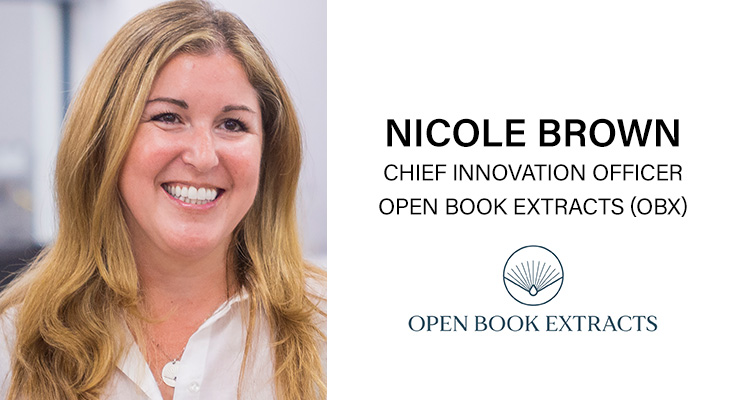
AC 420: What amount of CBD can be used in personal care and cosmetic products?
Brown: There is no consensus on the CBD dosage for topical application so far, and the effective concentration to obtain the activities reported in literature is yet to be defined. You will find cosmetic products that mention the CBD content in milligrams while some products will mention a percentage; both measurements are ok and can be converted to each other easily. They represent how much CBD you would be using with that product.
The most common recommendation for CBD concentration in skin care is around 1%, but concentrations can vary widely. In order to find an effective concentration to deliver the activities mentioned in literature, it would be necessary to conduct studies to evaluate the concentration and results.
AC 420: Has OBX conducted CBD studies in relation to cosmetics or personal care products?
Brown: Yes. OBX regularly conducts consumer insights studies on our new product formulations. In addition, we recently completed our first cosmetic research study, an open-label, randomized, passive-control study examining the impact of topical serums containing Tetrahydrocannabivarin (THCV) on skin acne. The results are scheduled to be released in Q4 2022.
AC 420: What is the stance the FDA takes on personal care products and cosmetics with CBD in formulations?
Brown: The FDA has not expressly prohibited the use of CBD in cosmetics like it has with conventional foods and dietary supplements and has limited its enforcement actions to companies that make egregious medical claims about their CBD products. Second, many state regulators do not seem to take issue with the sale and marketing of these products.
Lastly, and maybe most importantly, the cosmetic industry has been poorly regulated for nearly a century. The FDA relies on consumer complaints to monitor this self-policed industry. For example, recalls of cosmetics are voluntary actions taken by manufacturers or distributors.
AC 420: What are other important points to consider about CBD in cosmetics from a legal perspective?
Brown: Some federal laws and regulations apply to cosmetics marketed in interstate commerce. Both the Federal Food, Drug and Cosmetic Act (FDCA) and the Fair Packaging and Labeling Act (FPLA) mandate that cosmetics be safe and properly labeled. Note that most states have adopted and are implementing these very same laws and regulations. Generally, the FDA will deem a cosmetic is unsafe or “adulterated” if it contains a harmful ingredient. Through its rulemaking process, the FDA has banned a small list of ingredients or substances from cosmetics. However, even ingredients or substances that are not expressly listed in the FDA regulations may be prohibited if proven to be unsafe for their intended use.
In its cannabis FAQs, specifically answering the question, “What is FDA’s position on cannabis and cannabis-derived ingredients in cosmetics?” the agency stated that: “Certain cosmetic ingredients are prohibited or restricted by regulation, but currently that is not the case for any cannabis or cannabis-derived ingredients.”
Nevertheless, the agency went on to explain that: “Ingredients not specifically addressed by regulation must nonetheless comply with all applicable requirements, and no ingredient—including a cannabis or cannabis-derived ingredient—can be used in a cosmetic if it causes the product to be adulterated or misbranded in any way.”
As such, manufacturers and distributors of hemp CBD cosmetics should, at a minimum, ensure that their products are free of all substances found in the FDA regulations but also that their products are safe for human consumption before they are placed in commerce. Adopting these good business practices will not only help shield CBD companies from the scrutiny of FDA and state regulators, but will also help protect them from strict liability and other types of consumer lawsuits.
Moreover, growing concerns regarding the safety of cosmetics and demands for safer, clean labeled products, have led to the explosion of the global natural and organic beauty market, which includes hemp CBD cosmetics. Thus, ensuring the safety and quality of hemp CBD cosmetics does more than mitigate the risk of enforcement actions; it also provides manufacturers and distributors with an opportunity to increase revenue by giving consumers what they want and deserve.
In addition to ensuring the safety of their cosmetic products, manufacturers and distributors must also check that their products are properly labeled or not “misbranded.” A cosmetic is misbranded if it is labeled in a false or misleading way, if it fails to include mandated labeling information, or if it is deceptive in any way. According to several studies conducted in the past two years, including one recent study led by the FDA, many CBD cosmetics found on the market are mislabeled because they contain false potency claims, specifically lower concentrations of CBD than those listed on their labels. This issue is so prevalent in the industry that several companies have been hit with consumer class action lawsuits.
Another way a cosmetic may be deemed misbranded or mislabeled is if the product label explicitly or implicitly suggests the product is intended to affect the structure or function of the body, or to diagnose, cure, mitigate, treat, or prevent disease, and thus, is a drug and not a cosmetic, as might be stated in the statement of identity or in the directions for use.
Consequently, manufacturers and distributors of hemp CBD cosmetics should refrain from making any medical claims regarding the therapeutic value of their products. This, of course, would render hemp CBD cosmetics unlawful under federal law. This will not be possible until the FDA regulates these products. Instead, such practice would further mitigate the risk of enforcement actions.
AC 420: OBX has a presence in the UK. How are EU regulations affecting your business?
Brown: OBX is a member of the European Industrial Hemp Association’s (EIHA) Novel Food Consortium. The EIHA Novel Food Consortium, officially launched in June 2020, is a project aimed at clearing the way for hemp foods and extracts, including CBD, in the UK and EU member states. By joining the consortium established by the EIHA, OBX works with the collective of member companies to pursue the safety studies to provide safe and ready access to cannabinoid-based products throughout the UK and EU. The joint application for Novel Food approval requires, including all relevant toxicological studies, an estimated financial expenditure of up to €3.5 million.
The EU Commission includes CBD in the CosIng (Cosmetic Ingredient) database. CBD ingredients are allowed to be used in cosmetics without any restriction across the EU, and as such, supports the opportunity to serve the growing cannabinoid cosmetic industry in the EU.
AC 420: Does OBX offer white-label services for personal care products?
Brown: Yes. OBX offers concept-to-market formulation and manufacturing services, leveraging a broad portfolio of cannabinoid ingredients and unique delivery mechanisms to help bring to market a wide range of personal care products.









